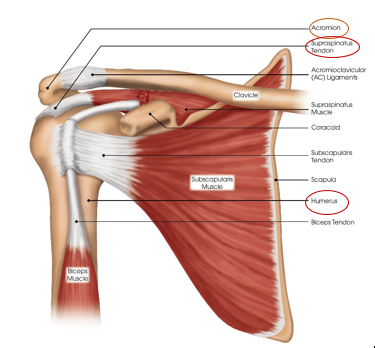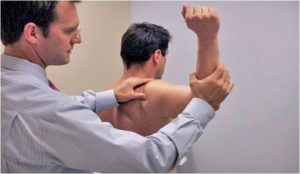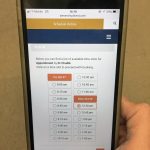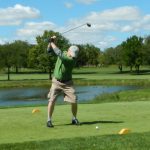
Overuse injury sidelines World Series Champion pitcher
Former Chicago Cubs pitcher and World Series Champion Aroldis Chapman was placed on the disabled list recently for left shoulder rotator cuff inflammation, also known as impingement syndrome. According to media reports, a magnetic resonance image (MRI) of the injured shoulder showed no signs of structural damage to the rotator cuff muscles. Team doctors are treating the star pitcher conservatively with physical therapy and no throwing for at least two weeks. The cause of rotator cuff inflammation and the resulting impingement in this situation is most likely from overuse and the prognosis is usually excellent with a full recovery in six to eight weeks.
Shoulder impingement often results from repetitive overhead activities and is particularly associated with dramatic increases in shoulder activity, age-related narrowing of the space for the rotator cuff, previous relative inactivity, rotator cuff muscle weakness or injury such as a fall on an arm extended overhead.
Impingement syndrome is characterized by pain in the shoulder due to irritation or inflammation of the tendons of the rotator cuff and or subacromial bursa. Classic impingement syndrome occurs when the arm is elevated causing the rotator cuff tendon and subacromial bursa to contact or become impinged between the acromion (roof of the shoulder) and the head of the humerus (upper end of the arm bone). Another type of impingement is internal impingement, also known as posterosuperior glenoid impingement. Internal impingement results from painful contact in the shoulder joint between the greater tuberosity of the humerus and the posterosuperior glenoid (socket). There is intervening rotator cuff tendon and labrum tissue that can be damaged.
 Signs and symptoms include:
Signs and symptoms include:
• Pain around the shoulder, often at the outer portion of the upper arm
• Pain that is worse with shoulder function, especially when reaching out or up
• Occasional aching when arm is not in use or pain that awakens you at night
• Occasional loss of strength or difficulty raising the arm
• Crepitation (cracking sound) when moving the arm from inflamed bursal tissue
• Pain and inflammation along the course of the Bicep tendon (in the front of the upper arm)
Conservative treatment for impingement syndrome consists of physical therapy and exercises to restore rotator cuff and scapular muscle strength, endurance and mechanics to allow proper non-painful motion of the shoulder. Avoiding activities that aggravate the symptoms also helps relieve the inflammation and pain. A steroid injection to the inflamed area around the tendon (within the bursa) sometimes is recommended for patients who are extremely limited by pain. If conservative treatment does not relieve symptoms, a MRI would be indicated to rule out a rotator cuff tear.
Surgical treatment options include arthroscopic subacromial decompression to increase the space between the rotator cuff and the roof of the shoulder (coracoacromial arch). This is performed through several small arthroscopic incisions using small diameter instruments and camera that allow the surgeon to “see” and address the impinged tissue. Return to full activity can take up to six months.
To help prevent shoulder impingement syndrome and many other shoulder injuries:
• Always warm up and stretch before activities, practice, or competitions
• Allow time for adequate rest and recovery between activities involving your shoulder
• Maintain appropriate conditioning that includes:
– Cardiovascular fitness
– Shoulder flexibility
– Muscle strength and endurance
• Use proper technique
Barring any setbacks, Chapman should be able to return to the New York Yankees’ line-up with his 100.87 MPH fastball. Fortunately, the Cubs no longer have to play the Yankee’s this regular season but it could be another story come October.
If you or someone you know suffers from shoulder pain or any of the symptoms described earlier, consider scheduling an appointment with Dr. Steven Chudik at the Shoulder, Knee & Sports Medicine Clinic. A Top Doctor in orthopaedics, Dr. Chudik is renowned for his arthroscopic shoulder expertise and innovative procedures that reduce shoulder surgical trauma, speed recovery and yield excellent outcomes. Dr. Chudik has been treating patients since 2002 throughout the Chicago area—including Hinsdale, Naperville and Elmhurst—as well as patients from both coasts. He has convenient hours and clinic locations plus onsite X-ray and MRI imaging capability. To schedule an appointment with Dr. Chudik, call 630-324-0402, or schedule on his website at https://www.stevenchudikmd.com/schedule-online/.
The opinions provided by Dr. Chudik are just that, opinions. However, they are based on more than 15 years of experience treating athletes with shoulder injuries and on the information available at the time of publication. Dr. Chudik did not perform a formal physical assessment and/or diagnosis on Aroldis Chapman.








